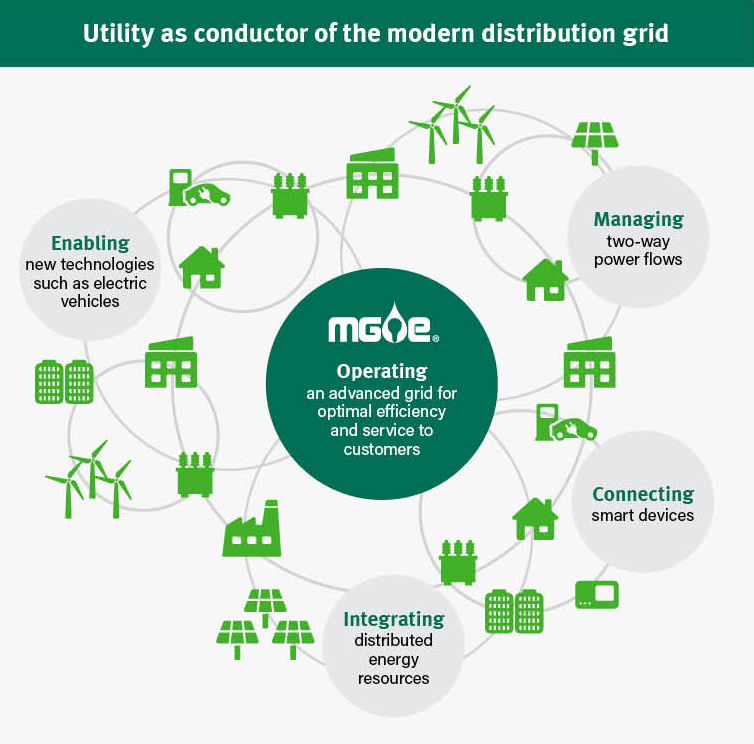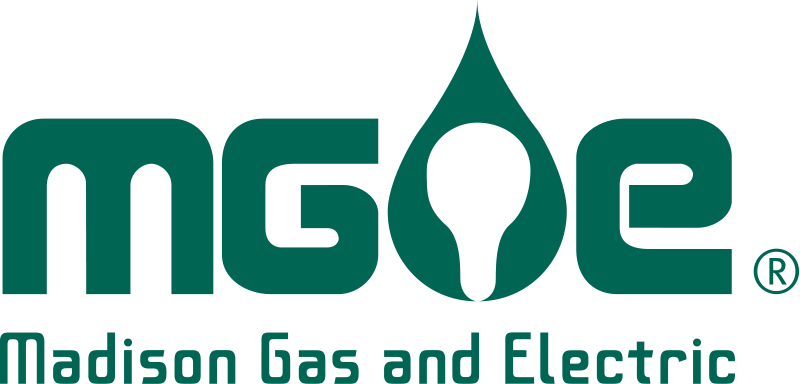
Fall 2025
Subscribe
Understanding Our Evolving Energy Grid
By MGE Residential Energy Engineer Leah Samson
We all use energy every day—but have you ever wondered where it comes from or how it gets to you? It can be fun and fascinating—for kids and adults alike—to learn how our power grid works.
In the past, the energy system was simpler. Power plants burned coal or other fuels to generate electricity, which then traveled in one direction—from the plant to homes and businesses. The power for our homes and businesses followed a one-way process.
Today, things look very different. Our grid has grown into a more dynamic, interconnected web. Electricity is generated or distributed from many sources, including solar fields, wind farms, large-scale batteries and smaller installations like solar panels on schools, homes or businesses. These diverse sources feed energy into the grid at different times, depending on conditions.

Utility as “Conductor” of the Grid
Managing this complex system requires careful coordination. When the utility serves as the conductor of the electric grid, new technologies and resources can add value to the system because the utility is able to dispatch generation and balance demand as needed. With more sources of two-way power flows, a single conductor provides efficiency in coordinating the different sources of power and the various needs of the grid in real time.
For example, solar panels only produce electricity when the sun is shining—and even a passing cloud can cause a dip in output. Wind turbines rely on wind to spin, but they may shut down if it gets too cold. Some of the best wind resources are located in our region, in places like Iowa. That means we rely on long-distance transmission lines to carry high-voltage electricity from those remote wind farms to where it’s needed most.
Natural gas helping enable clean energy transition
MGE and other utilities need to ensure power is available to all customers who need it and at all times, no matter the sun or wind conditions. Natural gas-fired power plants provide reliable, dispatchable energy to ensure our electric system is reliable and balanced. Considered a “bridge fuel,” natural gas plants can be dispatched quickly and at times when it’s more challenging for wind or solar generation, making it a reliable and cost-effective option to serve customers as we grow our use of renewables—and invest in battery storage. Natural gas is helping to enable the clean energy transition.
A safe, secure, reliable and sustainable grid
New technology is changing how we plan for the energy grid of the future. The utility as conductor can optimize the efficiency and use of the electric system’s assets to help control costs and to optimize benefits and value over time. The benefits of grid resiliency, reliability and a more efficiently managed power system are captured for all.
It takes a skilled team—like the conductor of an orchestra—to keep everything running smoothly to make sure our homes and businesses always have power when they need it.

